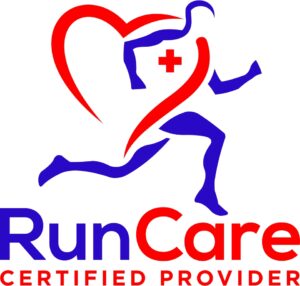
Introduction
Welcome to another informative blog post from WildHawk Physical Therapy. Today, we’re focusing on a common shoulder issue that many people encounter—shoulder impingement. Whether you’re an athlete looking to prevent injuries, an active individual trying to maintain shoulder health, or someone dealing with persistent shoulder discomfort, this guide will empower you with knowledge about the causes, symptoms, treatment options, and preventive measures for shoulder impingement.
Shoulder Impingement: An In-Depth Look
Shoulder impingement is a prevalent and often painful shoulder condition. It occurs when the tendons of the rotator cuff muscles and the bursa (a sac filled with fluid that provides cushioning) become irritated and compressed as they pass through a narrow space known as the subacromial space. This compression can result in pain, limited mobility, and, if left untreated, can lead to further damage.
The Anatomy of Shoulder Impingement
To understand shoulder impingement fully, let’s delve into the anatomy involved:
- Rotator Cuff: The rotator cuff is a group of four muscles (supraspinatus, infraspinatus, teres minor, and subscapularis) and their associated tendons that surround the shoulder joint. They play a vital role in stabilizing the shoulder and enabling various arm movements.
- Subacromial Space: This is the area beneath the acromion, a bony projection on the shoulder blade (scapula). The tendons of the rotator cuff, as well as the bursa, pass through this space. In shoulder impingement, this space narrows, leading to irritation and inflammation.
Identifying the Symptoms of Shoulder Impingement

Shoulder impingement typically presents with several telltale signs, including:
- Pain: The most common symptom is pain in the front or side of the shoulder. This pain may worsen with overhead movements or reaching behind the back.
- Weakness: As the condition progresses, you may notice a loss of strength in the affected shoulder, making it challenging to perform everyday tasks.
- Limited Range of Motion: Shoulder impingement can restrict your ability to lift your arm, reach overhead, or rotate your shoulder.
- Popping or Clicking: Some individuals with shoulder impingement may experience popping or clicking sensations when moving the shoulder.
The Role of Physical Therapy in Managing Shoulder Impingement
Now that we’ve explored the intricacies of shoulder impingement, let’s discuss how physical therapy plays a crucial role in managing this condition.
Is Professional Help Essential?
If you suspect you have shoulder impingement or are experiencing any of the symptoms mentioned, it’s essential to seek professional help. Early intervention can significantly improve your outcome and prevent the condition from worsening.
Early Intervention Matters
Early diagnosis and treatment are vital for managing shoulder impingement effectively. Delaying treatment can lead to increased pain, a longer recovery process, and the potential for more invasive interventions down the road.
Gaining Strength and Flexibility Through Treatment
When it comes to treating shoulder impingement, a key focus is on rehabilitating and strengthening the shoulder joint. Physical therapists tailor their treatment plans to address the specific needs of each patient, ensuring that progress is gradual and safe.
- Customized Exercise Regimens: Your physical therapist will develop a customized exercise program tailored to your condition and goals. These exercises target not only the rotator cuff muscles but also the surrounding muscles that play a crucial role in stabilizing the shoulder joint. The emphasis is on gradual progression, ensuring that your shoulder gains strength without risking further injury.
- Resistance Training: In addition to traditional exercises, resistance training may be incorporated into your rehabilitation plan. Resistance bands and weights can be used to gradually increase the load on your shoulder muscles, aiding in their development and stability.
- Functional Movements: As you progress in your treatment, your physical therapist will introduce functional movements that mimic real-life activities. This approach helps you regain the ability to perform daily tasks, sports-related motions, and work-related activities without pain or discomfort.
- Flexibility Enhancement: Flexibility exercises are a crucial component of shoulder impingement rehabilitation. These exercises aim to improve the range of motion in the shoulder joint, alleviating stiffness and discomfort. Your physical therapist will guide you through stretches and mobility exercises designed to enhance your shoulder’s flexibility.
Effective Pain Management Strategies

Managing pain is a central aspect of shoulder impingement rehabilitation. Reducing pain and inflammation not only enhances your comfort but also promotes the healing process. Effective pain management strategies may include:
- Therapeutic Modalities: Physical therapists employ various therapeutic modalities to alleviate pain and reduce inflammation. These may include the application of heat or cold therapy, ultrasound, or electrical stimulation. These modalities are carefully selected to suit your specific needs and comfort level.
- Pain-Relieving Exercises: Your physical therapist will guide you through a series of exercises specifically designed to target painful areas. These exercises are chosen to alleviate discomfort and promote healing while respecting your current physical capabilities.
- Manual Therapy Techniques: Hands-on manual therapy techniques are a valuable part of pain management. Your physical therapist may use these techniques to manipulate soft tissues and joints gently. This approach can reduce pain, improve range of motion, and enhance overall function in your shoulder.
- Medication Review: While your physical therapist can offer guidance on managing pain and discomfort, the review of medications falls within the purview of your medical doctor. It’s important to consult with your healthcare provider to discuss your current medication plan and explore potential adjustments if necessary. The goal is to ensure that you’re using medications as effectively as possible. However, our aim is to minimize long-term reliance on medications, as they may mask underlying issues rather than address the root causes of shoulder impingement. Instead, we focus on comprehensive rehabilitation and non-pharmacological strategies to promote lasting shoulder health and function.
- Activity Modification: In some cases, modifying your daily activities or work-related tasks may be necessary to minimize stress on the shoulder joint. Your physical therapist will provide guidance on ergonomic principles and techniques to help you adapt your routines while recovering.
Conclusion
In conclusion, shoulder impingement is a common condition, but it’s one that can be managed effectively. With the guidance of our expert team at WildHawk Physical Therapy, you can regain strength, flexibility, and function in your shoulder while minimizing pain. Don’t let shoulder impingement hinder your active and pain-free life. If you’re experiencing shoulder pain or suspect you have shoulder impingement, reach out to us at WildHawk Physical Therapy for a comprehensive evaluation and a personalized treatment plan. Your journey toward recovery and a healthier shoulder starts with us.
Frequently Asked Questions:
- Q: What leads to shoulder impingement?
A: Shoulder impingement often results from the narrowing of the subacromial space, leading to compression and irritation of the rotator cuff tendons and bursa. Various factors, including overuse, poor posture, and muscle imbalances, can contribute to this narrowing. - Q: How long does it typically take to recover from shoulder impingement with physical therapy?
A: Recovery time varies depending on the severity of the condition and individual factors. Many individuals experience significant improvement within several weeks to a few months through consistent physical therapy and adherence to recommended exercises and treatments. - Q: Is it possible to continue participating in sports or physical activities with shoulder impingement?
A: It’s essential to consult with a physical therapist for a personalized assessment. While some modifications to your activities may be necessary initially to prevent exacerbation, many individuals can eventually return to their desired sports and activities with proper rehabilitation. - Q: Are there any home exercises that can help alleviate shoulder impingement pain?
A: While it’s crucial to work with a physical therapist to develop a tailored exercise program, there are gentle stretching and mobility exercises you can perform at home to help alleviate pain and discomfort. However, consult a healthcare professional before starting any new exercise routine. - Q: Can shoulder impingement lead to other shoulder problems if left untreated?
A: Yes, if left untreated, shoulder impingement can potentially lead to more severe shoulder issues. Chronic inflammation and irritation can result in conditions such as tendinopathy, rotator cuff tears, or bursitis. It’s crucial to address shoulder impingement early to prevent these complications and promote a faster and more complete recovery.









